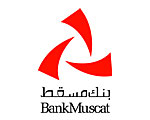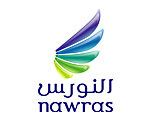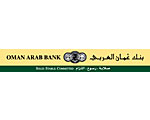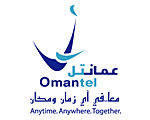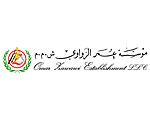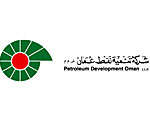Jamal Al Asmi is Production Manager at Reality CG
URL: www.realitycg.com
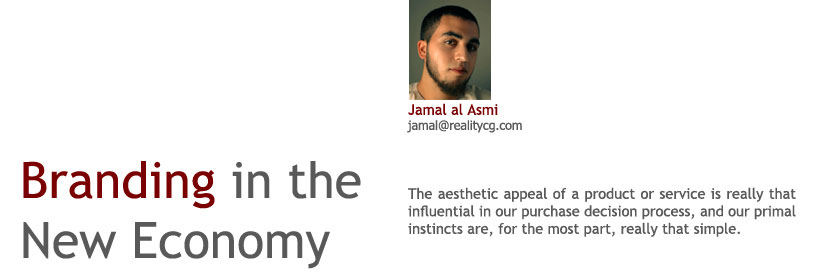
The same applies to almost every situation in life, from choosing your partner to buying a sofa - so make sure your partner has good wear and your sofa's got plenty of personality.
Let's start by stating the obvious. Branding is one of the most influential factors in making a purchase-period. You probably already knew that, because when you stood in front of ten orange juice containers the other day at the local supermarket, and had to decide which one to buy, you more than likely went for the one you liked ‘the look of'.
The new economy, or more commonly referred to as the new market place, has altered branding considerably. Gone are the days when a good letterhead or a snappy poster were enough to impress your customer. Today, people are exposed to brands in almost every facet of their lives. From the advertisement on their favourite morning TV show to the digital billboards they see on their drive into work, brands are everywhere. This proliferation is due to the advent of digital technologies and their connectivity. A brand can now be broadcast across the globe with a single click of a button, landing them in your office, home and on your highway. So what impact is this having on branding?
Desperate means calls for desperate measures, and this is certainly true of the new economy's affect on visual communication. Some of the most established companies are going as far as to implement the risky re-naming of their dusty corporate identities, and the re-design of their well established logos. This is not mere cosmetic surgery, but rather a response to the growing gap between the old paper economy and the new digital age. If the giants are going to such extremes, one can be assured that we live in a time when identity development has become ever more critical to ensure prosperity and better commercial performance.

The new economy places your product and service on the same shelf with those of the global players, and due to the broadcast nature and coverage that digital media enjoys, effective expression has become key to survival. The very fact that your customer is now exposed to so many brands means they've become familiar with the visual-language of some of the world's best marketers. Your customer now has a taste for things that speak directly to their needs. In order to compete with Coke, Nike and Starbucks, it's necessary to understand some of the latest trends in effective brand building. What constitutes a successful brand is no longer a shiny logo that gets the CEO's nod of approval, but rather a complete visual relationship between client and company.
The contact your customer has with a brand, whether it's on a cereal box, in a magazine, or on the Internet is frequently the only point of contact they have with your company. This point of contact is usually a visual one and you need to stand out amongst the masses of images that are all fighting for attention. The pitch has to be good, talk directly to the consumer's needs and preferably often enough to make it stick, because you're not small enough to fit in your client's PDA or in their television sets. Considering this, one needs to tread carefully and ensure that the message you want to get across, does indeed, hit the target. Everything from the colour palette and logo, to the choice in photography, video and motion graphics used in branding your company is important in developing a good relationship with your customer. Ultimately, the quality of the service and product provided has the final say, but the brand which represents you, does have a very strange and lasting affect indeed.
There are countless people who are devoted to a brand based predominantly on their aesthetic relationship and the lifestyle that's sold to the consumer through advertising. A picture says a thousand words but a brand, says it all. That's the current trend at least. It's also important to remember that it isn't the strength of any single element in your brand, but rather the synergy of the total package.
What constitutes an effective brand is the million Rial question and one that a number of authors and brand experts have tried to answer. These simple guidelines will help you on your way to develop your brand and reach the very top of the food chain, or at least to get you the attention you deserve. Consider the following:
1. A brand that adopts a new age approach - being new and fresh certainly helps getting noticed. An ultra-modern name helps too, especially among the technology-minded circles, as does a metaphorical logo, rather than a literal one.
2. A creative strategy with a clearly defined target audience - producing good looking materials that are left unmanaged won't sell a product or a service; it has to be cooked to your target demographics' tastes and adapted if they change. All your materials should be consistent in approach and mean something to your clients at the time of sale.
3. A brand identity which embodies who you want to be, not what you actually are – It's good to look further down the road, and portray your goals and aspirations.
4. Research suggests that a brand which has perceived quality, brings a high ROI - and similarly a brand that's perceived to be of low quality, can really hurt your returns. So make sure your brand is tidy, smart and consistent with all the other materials generated for your company.
5. A brand which translates well across a range of media including print, Web and broadcast. This also means the logo should hold the possibility of animation, as motion graphics plays an important role in digital media.
6. A brand which adapts in sympathy with market trends - Oman's following a trend shift towards global culture. Brand specialists look to the current trends and where they're headed. A good example of this is the recently developed brand for Oman Oil. At first sight, one could hardly say that the brand has been pitched with the usual local iconography, but it clearly embraces a more progressive approach - this is reflective of the future marketplace, where Oman is headed.
7. Don't try this at home - effective brands are created by professionals, in specially controlled environments and not on the back of cigarette packets.
These rules, although not hard and fast, do provide a good outline for what your brand should carry. If implemented successfully, they should serve you and your organisation well. There are other considerations that need to be taken into account, particularly with regard to the Internet's influence on brand. This isn't limited to registering your domain name - which if already taken, can be a nuisance. Indeed, lots of money has changed hands between corporates and smug Internet merchants who had the foresight to buy up domain names when the going was good.
Not so innocent brand abuse also exists, due to the super size of the digital realm, people can use your company logo in all sorts of unsavoury ways. There are no quick fixes to these problems either. One safeguard is getting the best search engine positioning/ranking you can. It still provides the best ROI of any interactive marketing, and although the process is arduous and takes time, well thought through key words that match web-content in your site, really helps search engines find you. Branding is getting smarter by the day and for those who opt to brand themselves properly, these difficulties need to be understood and addressed during brand creation. It's important, however, not to abandon your brand after its initial development. Brand management is essential in maintaining its continued success.
Being able to freely communicate and market your product, in almost every conceivable manner, is a wonderful opportunity, particularly, with a strong brand at hand. Poor branding however won't cut it anymore and won't get you any traction in the new economy. For the entrepreneurs out there, consider yourselves fortunate, because in today's ever-inter-connected world you've a greater opportunity to broaden your brand's reach than at any other time in history.


